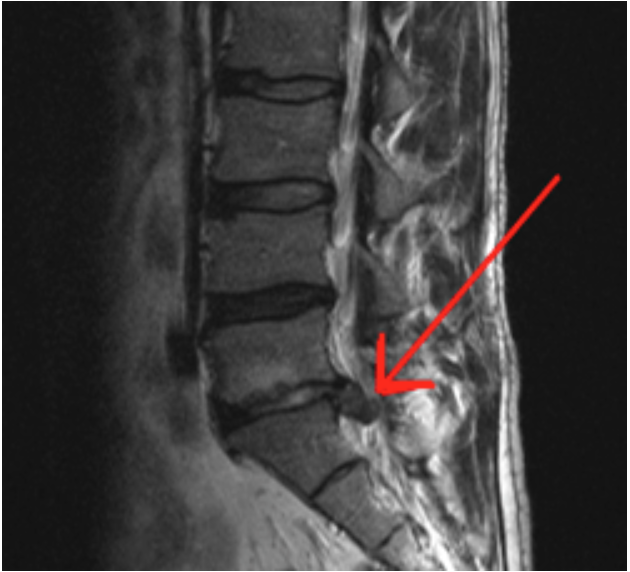Instant Analysis: Rob Gronkowski Out For the Year
We received more bad news on Rob Gronkowski, as the New England Patriots tight end will undergo back surgery and is out for the remainder of the fantasy football season. This is a blow for those who expected Gronkowski to carry them through the fantasy football playoffs, but how does this impact his outlook in dynasty formats?
[am4show have=’g1;’ guest_error=’sub_message’ user_error=’sub_message’ ]
Gronkowski came into the NFL with back problems and has undergone microdiscectomy surgeries in 2009 and 2013. This is his second recurrence of a lumbar disc herniation. The family statement noted Gronkowski had pain in his back and legs after the Jets game, and that is consistent with radiculopathy, a fancy term describing pain shooting down the legs. Radiculopathy occurs when a disc herniates and presses on a nerve as it exits the spinal column. Most disc herniations occur at L4/5 or L5/S1, both lower levels of the spine that serve areas of the lower legs and gluteal region (buttocks). Hence, pain can radiate to the gluteal region and down the leg with pressure on the nerve.
Here is a diagram of a disc herniation:

The red arrow is pointing to a piece of disc that has herniated into the spinal canal and is pushing on nerves. If you look closely, you can see nerves as slightly dark lines, similar to spaghetti noodles in appearance, on a bright background of spinal fluid. As the disc extrudes into the spinal canal, it pushes on nerves both in the canal and/or as nerves exit to the lower extremities. This can result in pain and other neurological deficits, such as weakness.
This diagram also shows it well:

Microdiscectomies are a minimally invasive surgical technique that utilizes instruments to identify the herniated disc, cut away parts compressing the pinched nerve, and eliminate the source of pain. Other surgeries might also include removing the entire disc, placing a bone graft between the vertebra, and allowing the bone to fuse. Sometimes artificial discs can be placed in lieu of a graft, but medical literature is controversial on whether it is any better than a fusion.
The natural question for fantasy football players, particularly in dynasty leagues, is how likely it is that Gronkowski will come back from this injury, and what are the odds of him having a fourth back surgery?
There isn’t much data on athletes with a third lumbar disc herniation and surgery for it. There is medical literature that describes treatment of recurrent lumbar disc herniations, and they are a bit reassuring. One study of lumbar disc herniation in offensive lineman found a 13.5% chance of recurrent herniation, and 85.7% returned to play in the NFL. Granted, this study didn’t evaluate tight ends, but it’s encouraging nonetheless.1 There are case reports describing successful repeat discectomies on athletes2. A variety of studies on athletes with lumbar disc herniations show successful return to sport in 80-85% of cases, with an average career length of 3-4 years. Other published literature supports a 5-15% chance of recurrent lumbar disc herniation3, with good results in 60-80% of patients undergoing repeat surgery for it. Another study reported 80-90% success rates for patients undergoing microendoscopic discectomies for recurrent lumbar disc herniations4.
The medical literature isn’t optimal on this subject, but what is published is encouraging for Gronkowski and his ability to have a successful outcome. It’s worth noting that Gronkowski will have the most skilled and experience surgeons operating on him, in addition to an experienced rehabilitation team. Both factors are huge in the recovery from back surgery. One caveat is, the dynamics of spine motion are altered with back injuries, and that can increase risk of recurrent disc herniations either at the surgical site or above/below it.
What should we conclude about Gronkowski in dynasty formats? I think Gronkowski is likely to return to play. Based on medical literature, he also stands a good chance of returning to his prior level of performance. His history of three back surgeries is, however, a bit of a red flag. Still, he is an elite player and only 27 years old. I’m a cautious buyer of Gronkowski, mainly from panicked owners who think this could be the end of his career. I would not pay a premium for Gronkowski, but I’d have no problem paying 50% to 75% of his value. Gronkowski’s recent ADP is 13 (TE1). I’d consider trading Greg Olsen (ADP 56) or Hunter Henry (ADP 77) in a deal for Gronkowski. Players like Kelvin Benjamin (ADP 27) or Jordan Matthews (ADP 25) I’d easily trade for Gronkowski.
Dynasty players who acquire Gronkowski must understand that his availability may always be an issue, but when he starts, he’s elite and a key to victory. I would not advocate paying a premium, but for dynasty owners willing to take on the injury risk, I’d be sending out offers now for him at a discount. The time to trade for him is now, while anxiety is highest about his recovery. For risk-taking dynasty players, it’s a move that could pay dividends in 2017.
- Management of Sports-Related Lumbar Conditions, Operative Techniques in Orthopaedics, September 2015. Vol 25(3): pp 164-176.
- Revision percutaneous endoscopic lumbar discectomy under local anesthesia for recurrent lumbar herniated nucleus pulposus in a high class athlete: A case report. J. Med. Invest. January 2016. Vol 63 (1-2):pp 135-139.
- Recurrent Lumbar Disc Herniation, Benzel’s Spine Surgery, 4th Edition
- Minimally invasive redo discectomy for recurrent lumbar herniations. Journal of Clinical Neuroscience, 2015;Vol 22(9): pp 1382-1386.
[/am4show]
- Dynasty Capsule: Carolina Panthers - February 3, 2017
- The Dynasty Doctor: CJ Anderson - January 25, 2017
- The Dynasty Doctor: Week 15 - December 20, 2016


































































